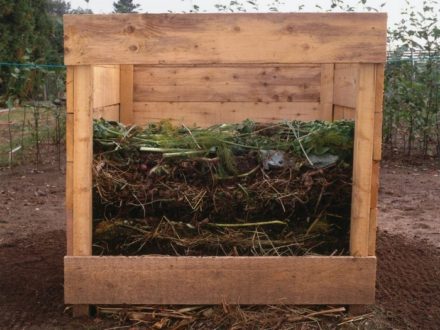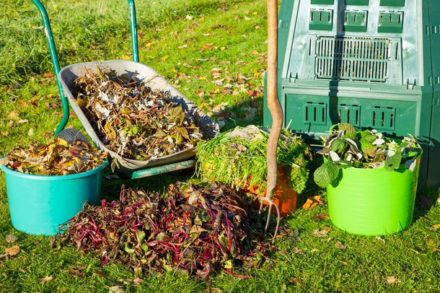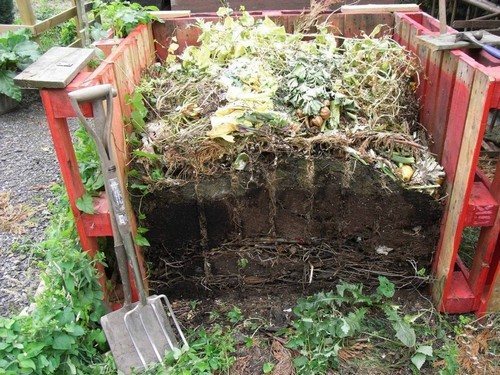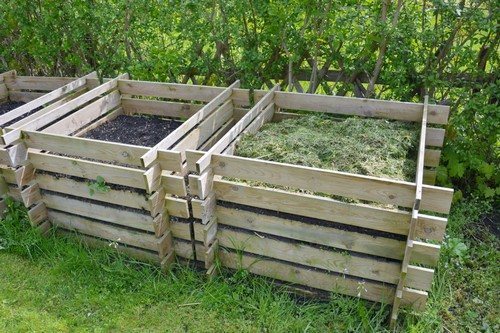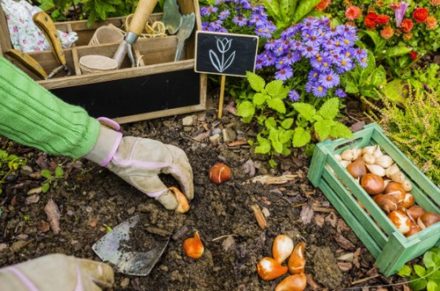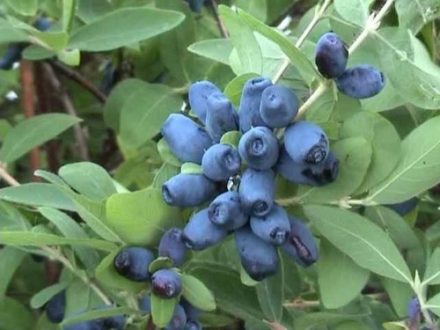Compost is a valuable natural fertilizer obtained by rotting organic matter. It will take time to mature (at least 6–9 months). When laying compost, certain rules are followed, otherwise the biomass will dry out or begin to emit an unpleasant odor. It is better to start a compost heap in the fall, then next season the fertilizer can be used to feed plants that need a large amount of nitrogen.
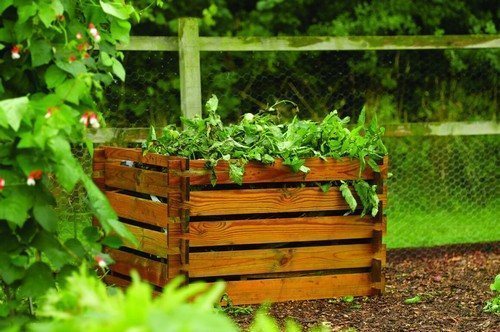
Suitable location for a compost bin
The compost bin is usually installed in a secluded corner of the garden, out of sight. It is undesirable for trees to grow nearby: their roots can change the direction of growth and draw nutrients from the compost. The place should not be illuminated by the sun from morning to evening. Otherwise, the organic matter will dry out, you will have to constantly monitor its condition and often add water.
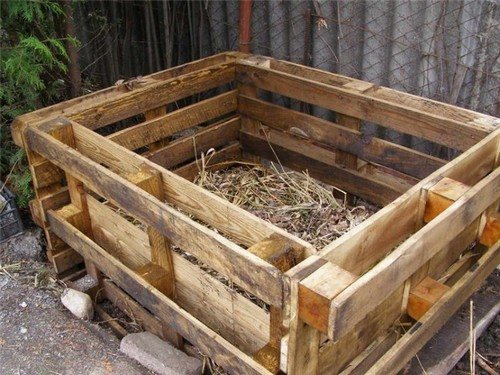
Pit, pile or tank?
Compost can be prepared in several ways. In the first case, they dig a hole about 1 m deep and 1.5x2 m in size. You can make it a little larger or a little smaller. The larger the compost bin, the faster the compost matures in it. For biological processes to occur, a stable temperature and a constant level of humidity are required. In a pit, these indicators are easy to achieve.
The second method involves building a compost heap. Its optimal dimensions are 1 m at the base and 1-1.2 m in height.Before laying the compost, dig a hole 20–25 cm deep, lay drainage from branches at the bottom - the liquid formed during the fermentation process will flow down along them. Then the organic matter is laid out in layers. The perimeter of the pile is fenced with boards or fine mesh. The top of the compost bin is covered with spunbond or straw.
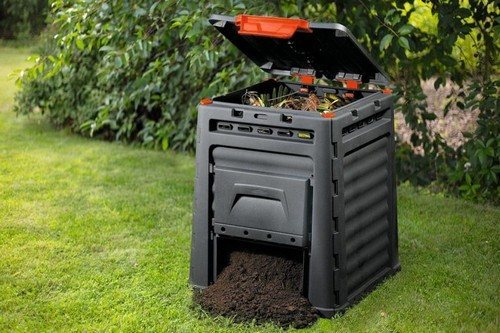
Another option involves putting compost in a special plastic bin; you can buy it at a garden center. This composter has a built-in water supply hose and a rotating drum that allows you to mix the contents. The compost bin is aesthetically pleasing and does not require the effort required to dig a hole or build a fence.
Whatever method of composting is chosen, several more conditions will need to be met in order to obtain high-quality compost, and not a fetid, slimy mass.
How to lay compost correctly
Organic matter is placed in compost in layers. Organic materials are conventionally divided into two types - green and brown. It is better to alternate them with each other. The waste must first be crushed; large pieces of organic matter take much longer to rot.
Green mass includes:
- cut grass;
- weeded weeds;
- waste of vegetables and fruits;
- tops
During the process of transformative reactions, this type of organic matter releases a significant amount of nitrogen. This group also includes manure and bird droppings, which can also be added to compost to speed up ripening.
Organics related to the brown mass:
- leaf litter;
- wood waste;
- cardboard;
- paper;
- straw;
- branches;
- bark.
These are carbonaceous components with a high fiber content.Their presence makes the compost loose and enriches it with various chemical elements necessary for the normal development of plants.
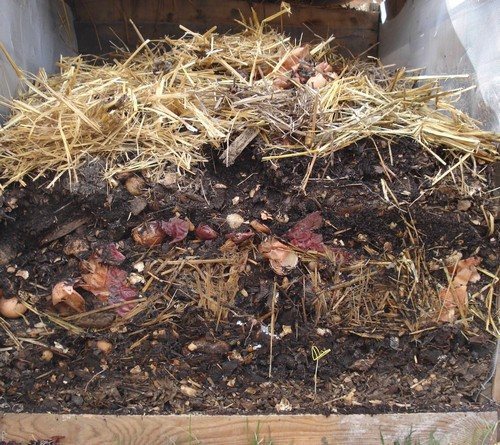
Each layer is made 15–20 cm thick. Food waste, paper, and fallen leaves are mixed with coarser materials to increase breathability. Lime or dolomite flour is added to wood shavings and bark to speed up the process of decomposition of the components. The lowest layer of organic matter is sprinkled with garden soil with the addition of lime.
Waste unsuitable for composting
Not all waste is suitable for making high-quality compost. Plant remains of plants affected by fungus or bacterial infection should not be placed in the compost heap. Pathogens will not die during the decomposition of organic matter and can infect plantings in the future. The tops of potatoes and tomatoes are poisonous, so they can cause the death of fermenting bacteria; it is also better not to put them in the compost bin.
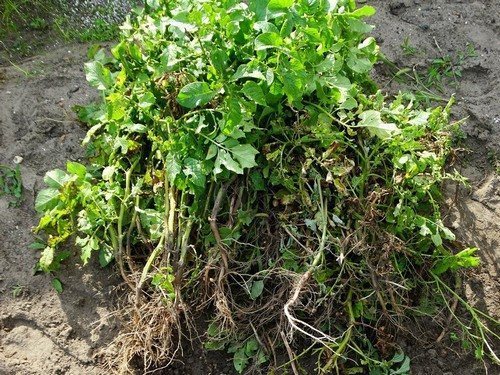
Do not use seeded weeds for this purpose, as well as rhizomes of perennial weeds. Do not add human, cat, or dog feces, which may contain helminths, to the compost. You cannot put glass, pieces of plastic, or synthetic materials into the compost heap, as they do not rot. Large bones, laminated paper, and citrus fruit peels are prohibited.
Use of compost maturation accelerators
The compost mass is periodically moistened. Moisture is necessary for fermentation processes. Humidity should be maintained between 45 and 70 percent. Organic matter should feel like a wrung out sponge.The optimal temperature in the compost heap is 30 °C (deviations of 3 °C in both directions are acceptable).
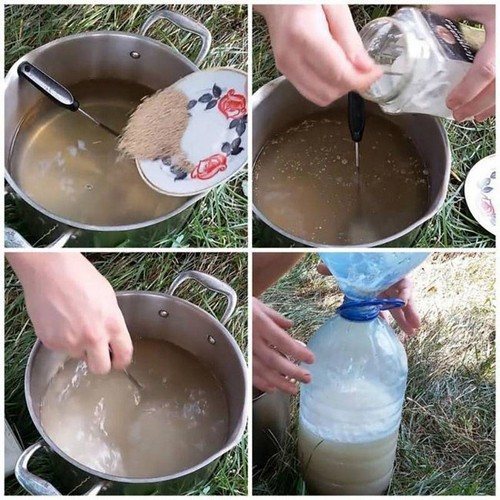
Dry organic matter will not decompose, but too wet organic matter will begin to cake and the fermentation process will be disrupted. Once every 2 weeks, the contents of the compost heap are shoveled. This is done more often in wet weather. Not only bacteria are involved in the preparation of compost, but also insects and earthworms.
To accelerate the maturation of the compost mass, add to it:
- Special biological fertilizers, for example, “Baikal-Em”, “Siyanie”. The microorganisms they contain contribute to the rapid decomposition of organic matter.
- Herbal "cocktail". It is prepared from cut grass with the addition of chicken manure (5 kg and 2 kg, respectively, per 20 liters of water). The composition is allowed to ferment under the lid for 5–7 days, periodically stirring the contents of the container.
- Yeast starter. To prepare it use 1 tbsp. l. dry yeast and a glass of sugar per 1 liter of warm water. Make a deep hole in the center and pour in the yeast solution.
The maturation of compost can be determined by its appearance. The mass will become loose and homogeneous, consisting of small particles. The color of mature compost is dark brown and the smell is reminiscent of wet earth. If there is no visible change in the compost pile, it is lacking moisture. You need to add potato peelings, mowed grass and water to the total mass.


